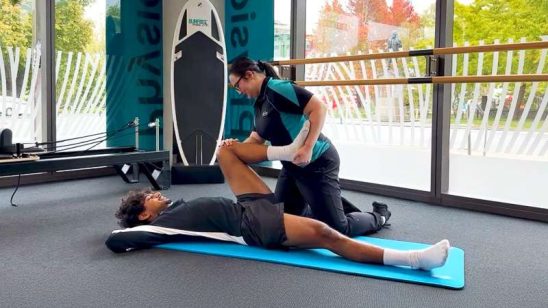
Reuse, relove: The challenge for the fashion industry
The fashion industry is responsible for 10% of the world’s carbon emissions – sending roughly 92 million tonnes of textile waste to landfill, of the 100 billion tonnes produced each year. Metropol editor Nina Tucker asks three industry leaders what it means to be a sustainable fashion brand in New Zealand.
Fashion is a “minefield to navigate” if you’re trying to be a sustainable shopper, according to Emma Wallace, managing director at Kowtow, a locally-founded fashion label that is B Corp and Fairtrade certified, and 100% plastic free. We can thank micro-trends and the rise of ultra-fast fashion, the cost of living, social media, and greenwashing for that minefield. How do we do better? Think circular. Emma says it’s key to take responsibility for design decisions – asking questions about materials used, the number of garments produced, and what happens to them once they’re unwearable.
“Sustainability here in Aotearoa means being thoughtful about every step of the process,” says Amanda Butterworth, country coordinator of
New Zealand Fashion Revolution, an organisation which celebrates all those working towards a more considered and responsible future for the industry. “Ideally, we’d see more circular design, less waste, and total transparency so people actually know who made their clothes and under what conditions.”
Mindful Fashion New Zealand works to create a sustainable and full-circle fashion and textiles ecosystem.
Chief Executive Jacinta FitzGerald says the industry needs a transformation – in the way we design, make, use, and value clothing. “We have an incredible opportunity to lead globally by creating high-quality, low-impact products grounded in circular design, local production, and conscious consumption.”
Jacinta says that means investing in innovation, scaling circular models, and supporting local manufacturing, while holding international brands operating in New Zealand to equal standards as our locals.
Consumer’s second-hand, vintage, and sustainable shopping movement is making a difference – “This shift is absolutely influencing the industry and it’s an important distinction from the sea of fast fashion we are seeing globally,” Amanda says – yet we’re far from finished. Brands like Kowtow (with Relove) and RUBY (with Ruby Says Recycle), are reflecting this new consumer need through resale initiatives. “The most sustainable garment is the one that has already been made,” Kowtow’s Emma says.
FASHION IN THE FUTURE
“A sustainable industry is a system that works for people, planet, and business,” Jacinta explains, and fashion houses are a huge piece of the puzzle. “We know 60% of consumers are willing to spend more on companies doing good, and nearly half are boycotting brands over social and environmental concerns,” Jacinta adds. The number of B Corps is growing – and that’s one part of it – yet “turning vision into action brings real challenges”, Emma says.
“Measuring [Kowtow’s] impact accurately takes time and specialist resources. Maintaining and renewing certifications adds significant costs. We’ve had to learn to prioritise key areas where we can make the biggest difference, rather than trying to do everything at once.”
Brands need to design for longevity, choosing “sustainable, preferably natural or local fibres, and make your supply chain as transparent as possible. Be honest with your customers about where you’re at and where you’re headed,” Amanda says. Echoing that sentiment, Jacinta encourages brands to educate customers on caring for and repairing their clothes.
That’s why Kowtow offers free repairs and a take back programme, Regenerate, which keeps their clothing out of landfill. For Emma and her team, these extra steps aren’t optional. “They’re vital for our community to see that sustainability isn’t just a marketing term, but something grounded in transparent data, honest reporting, and continual improvement.”



